Keynotes 2011
Keynote papers for 2011
Remote controlled nanoparticle heating for targeted medical applications
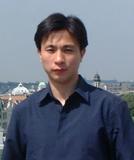
Dr Dongsheng Wen
School of Engineering and Materials Science, Queen Mary University of London, U.K
Abstract: Recent years see intensive interests in the synthesis and application of nanomaterials in different fields as far as from energy to biomedicine sectors. For instance widespread interest has been generated in tailoring gold nanoparticle (GNP) for non-invasive medical applications, either as a heating or a targeting agent for detection, diagnosis or treatment. One example application is cancer therapy where functionalized GNPs are proposed as potential agents for non-invasive thermal treatment and the feasibility has been proven in preliminary studies on non-targeted particles in vitro, and later in vivo. Nearly all these applications involve delivering bio-modified nanoparticles to malignant cells and rapidly heating nanoparticles with an external source such as laser, ultrasound or an electromagnetic wave to produce a therapeutic effect or to release drugs. The interaction of nanoparticles with the external source and subsequent heating effect is fundamental for the successful deployment of these novel techniques, where the thermophysical properties of nanoparticle suspensions play a key role.
This work conducts a review on the heating of nanoparticles by an external source such as ultrasound, laser, microwave, magnetic field and electromagnetic field at RF spectrum, and reports our latest development in the field, especially the ultrasound and RF heated nanoparticle suspensions for targeted medical applications.
Dr Wen’s research is focused at the interface of nanotechnology and energy science, i.e. engineering and utilizing unique properties of nanomaterials to enhance energy conversion and transportation processes. His work applies classical thermodynamics, fluid dynamics, heat transfer and combustion concepts cross the boundaries of nanotechnology, materials, chemistry, physics, medics and engineering. More specifically, it includes i) Nanofluids technology, i.e engineering stable suspensions of nanoparticles (colloids in general) for enhanced heat transfer applications. ii) Nanofuel technology, i.e investigating the oxidation, ignition and combustion of nanoparticles and their energy applications, iii) Nanowave technology: i.e engineering the heating and interactions of nanopaticles under an external electromagnetic wave for medical applications, and iv) other novel energy technologies. His has published ~130 technical publications of which ~ 70 were referred journal publications, and he has been invited to give many keynote presentations worldwide. Dr Wen is a Fellow of Royal Society of Chemistry (FRSC), a fellow of the Inistitute of Nanotechnology (FIoN), a Chartered Engineer (CEng) and a Chartered Scientist (CSCi).
Microscale Two-Phase Flow and Boiling: Fundamentals and Applications to 2D and 3D Chip Cooling
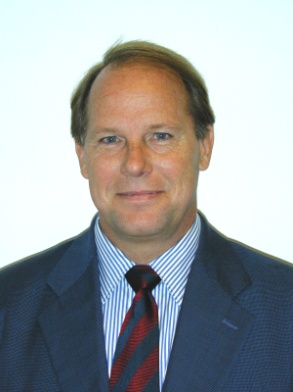
Prof. John R. Thome
Laboratory of Heat and Mass Transfer (LTCM)
Ecole Polytechnique Fédérale de Lausanne (EPFL)
Lausanne, Switzerland
Abstract: The lecture will present an overview of our ongoing two-phase flow and boiling research on single-microchannels and multi-microchannels (with up to 150 parallel channels down to 46 microns in width). The work covers two-phase flow observations, image processing techniques (our new time-strip technique for extracting two-phase flow characteristics to obtain bubble/slug velocities, lengths, dry patch formation, etc.), local flow boiling heat transfer and pressure drop data, void fractions, CHF, etc. The modeling efforts are directed at improving our mechanistic/flow pattern based models to predict diabatic flow pattern transitions, CHF, heat transfer, entrainment and so forth, including methods for stabilizing and distributing two-phase flows in a large number of parallel channels. Using our pseudo-chip with 35 local heaters and temperature sensors, we have recently obtained local hot spot measurements for emulating actual chips.
John R. Thome is Professor of Heat and Mass Transfer at the Swiss Federal Institute of Technology in Lausanne (EPFL), Switzerland since 1998, where his primary interests of research are two-phase flow and heat transfer. Recently, his work has primarily focused on two-phase flow pattern based heat transfer and pressure drop models for microscale evaporating flows and the development of multi-microchannel evaporators for electronics cooling. He received his Ph.D. at Oxford University, England in 1978. He is the author of four books: Enhanced Boiling Heat Transfer (1990), Convective Boiling and Condensation, 3rd Edition (1994), Wolverine Engineering Databook III (2004) and Nucleate Boiling on Micro-Structured Surfaces (2008). He received the ASME Heat Transfer Division's Best Paper Award in 1998 for a 3-part paper on two-phase flow and flow boiling heat transfer published in the Journal of Heat Transfer. Prof. Thome received the UK Institute of Refrigeration’s J.E. Hall Gold Medal in 2008 for his extensive work in the field of microscale refrigeration heat transfer and the 2010 ASME Heat Transfer Memorial Award for his work on flow pattern based heat transfer models for macro and micro-scale flows.
Forced Convective Heat Transfer in Novel Structured Beds of Particles
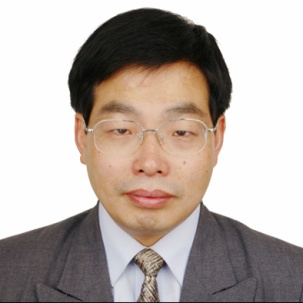
J. Yang, J.Wang, S.S. Bu, M. Zeng and Q.W. Wang *
Key Laboratory of Thermal Science and Engineering of MOE, Xi’an Jiaotong University
Abstract: Randomly packed beds are widely used in a variety of industries, because of their low cost and ease of use compared with other packing methods. However, the pressure drops in such packed beds are usually much higher than those in other packings, and the overall heat transfer performances may be greatly lowered. In order to reduce the pressure drops and improve the overall heat transfer performances of packed beds, structured packings are considered to be promising choices. In this paper, some of our recent contributions on the hydrodynamic and heat transfer characteristics in some novel structured packed beds are introduced, where the effects of packing form and particle shape are carefully investigated, and the numerical and experimental results are also compared in detail. Firstly, it is found that, with proper selection of packing form and particle shape, the pressure drops in the structured packed beds can be greatly reduced and the overall heat transfer performances will be improved. The traditional correlations of flow and heat transfer extracted from random packings are found to overpredict the pressure drops and Nusselt numbers for all the structured packings, and some modified correlations are obtained. Secondly, it is revealed that, both the effects of packing form and particle shape are significant on the flow and heat transfer in structured packed beds. With the same particle shape (sphere), the overall heat transfer efficiency of SC packing is the highest. With the same packing form, such as FCC or SC packings, the overall heat transfer performance of ellipsoidal particle model is better. Furthermore, with the same particle shape and packing form, such as BCC packing with spheres, the overall heat transfer efficiency of uniform packing is higher than that of non-uniform packing.
Keyords: Structured packing; Ellipsoidal particle; CFD, Experimental analysis
Dr. Qiuwang Wang is a professor and vice-dean of School of Energy and Power Engineering, Xi’an Jiaotong University, China. He was a visiting scholar at City University of Hong Kong from 1998 - 1999, and a guest professor at Kyushu University of Japan in 2003. He was the winner of China National Funds for Distinguished Young Scientists by NSF of China (2010). Dr. Wang is a member of Scientific Council of the International Centre for Heat and Mass Transfer (ICHMT) since 2009, a Committee Member of Heat Transfer Division K-18: Low Temperature Heat Transfer of ASME since 2009; and a vice president of Chinese Society of Engineering Thermophysics in Heat and Mass Transfer. He has also delivered more than 10 invited/keynote lectures in international conferences or foreign Universities.
His research interests include Computational Fluid Dynamics and Numerical Heat Transfer (CFD&NHT), heat transfer enhancement, transport phenomena in porous media, compact heat exchangers, building energy saving and indoor air quality, etc. He has instructed or co-instructed more than 60 PhD or master students. He has also been authors or co-authors of 4 books and more than 120 journal papers, about half of which are international journals. He has obtained 14 China Invent Patents and one US patent.
The use of open cell metal foams in heat exchangers: possibilities and limitations
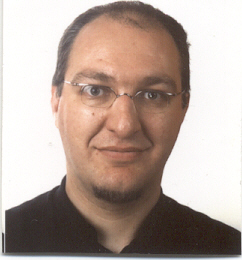
M. De Paepe, H. Huisseune, P. De Jaeger, C. T’Joen
Department of Flow, Heat and Combustion Mechanics, Ghent University- UGent – Belgium
Abstract: Open cell metal foam is under consideration for use in all kinds of heat transfer applications: electronics cooling, automotive heat exchangers, heat pumps, geothermal energy... In order to design the heat exchanger with this material, the foams need to be thermo-hydraulically characterized. Because of their interesting combination of properties (large specific surface area, tortuous flow paths, high strength…) a large amount of research has been done over the past decades. This paper presents a summary of this past research, showing the needs for further developments. This is mainly due to issues with the complex foam geometry and how to characterize it adequately. Recently an advanced geometric model was developed at the Ghent University based on detailed micro tomographic images of foam samples. Using this model it has been shown that for the hydraulic characterization (friction factor) the data spread can be reduced, by selecting the proper characteristic length scales. These are not only porosity, but also strut and cell diameter. Hydraulic analysis shows that applications with high fluid velocity are not intuitively favorable for foams. Low Reynolds-number forced convection and natural convection problems appear much more interesting. However, by adapting the heat exchanger design to account for the pressure loss (e.g. foamed fins or thin foam layers), the advantages of foam can still be used at higher velocities.
For thermal characterization little information is available. Determining the effective conductivity can be done by performing experiments in vacuum and using an unsteady conduction experiment. Determining of convective properties could be done by heat balance experiments on small samples. These experiments have to be coupled with advanced numerical models of foams. Using these models correlations for mixed conductive/convective heat transfer can be derived, which are needed to design and further optimize heat exchangers. Open cell metal foams clearly are a promising material for heat transfer technology. In order to see the first large scale application, specific applications will have to be selected and the heat exchanger designs will have to be optimized. Some examples are presented in the paper.
Michel De Paepe (°1972) is professor of Thermodynamics and Heat Transfer in the Faculty of Engineering and Architecture at the Ghent University (Belgium). He graduated as Master of Science in Electro-Mechanical Engineering at the Gent University in 1995. In 1999 he obtained the PhD in Electro-Mechanical Engineering at the Gent University, graduating on `Steam Injected Gas Turbines with water Recovery´. In 2005 he spend 3 months as a visiting professor at the University of Pretoria (South Africa), doing research on flow regime detection. He is currently heading the Research Group Applied Thermodynamics and Heat Transfer at the Faculty of Engineering at the Ghent University. Research focuses on: thermodynamics of new energy systems, performance of HVAC systems and energy in buildings and complex heat transfer phenomena in industrial applications, as in compact heat exchangers, refrigerant two-phase flow and electronics cooling. Michel De Paepe is (co)author of more than 40 papers published in international peer reviewed journals and more than 150 conference papers.
Visualisation Strategies for Computational Thermo Fluid Dynamics

Professor Gordon Mallinson
BSc Well, PhD NSW, Mem IEEE
Department of Mechanical Engineering, The University of Auckland, New Zealand
Abstract: This lecture reviews methods and strategies for visualising heat and mass transfer processes that involve fluid motion. The importance of being able to construct visualisation artefacts that accurately represent the properties of the mass, momentum and energy transfer vectors is discussed and appropriate methods based on vector and scalar potentials are described. Attention then turns to heat lines and surfaces (for 3D flows) which are becoming increasingly popular for visualising heat transfer process but suffer from ambiguities that arise from the choice of conditions for reference enthalpy. Fortunately, although the assumed reference conditions influence the heat line patterns within the flow, the overall heat transfer analysis provided by the lines may not be adversely affected. The possibility of extending the heat line approach to entropy and mass lines is then considered for two and three dimensional heat and mass transfer fields. The lecture ends with a discussion of the challenges of constructing meaningful whole field visualisation artefacts for transport vectors that depend on all three spatial dimensions.
Gordon Mallinson’s research interests in computational fluid dynamics (CFD) and visualisation were initiated during his 1973 PhD on 3D natural convection at the University of New South Wales together with exposure to 3D interactive computer graphics as early as 1968 at the Australian Defence Science and Technology Organisation’s Aeronautical Research Laboratories. Career highlights include: the development of the GRAFFIC post processor for PHOENICS at Imperial College in 1976; consultancy to AEA Technology UK for the development of visualisation and graphical user interfaces for CFDS-FLOW3D (precursor for CFX) in 1989; and the development of dual stream based stream line tracing algorithms in 1994. Particular foci for his research have been the prevention of false visualisation artefacts by ensuring that stream line tracing algorithms are mass conservative and the creation of whole field visualisation strategies. Current research includes flow feature extraction algorithms, CFD predictions and visualisation of biomedical flows in patient specific models using MRI measured flow fields for validation and entropy based methods for estimating irreversible losses from CFD solutions. He has been a consultant to several New Zealand and Australian industrial companies for CFD and visualisation and holds patents for fluid dynamics devices. He has been at the University of Auckland since 1982 and has been Head of the Department of Mechanical Engineering since 2005. He has been responsible for the introduction of teaching programmes in CFD, computer aided design, computer graphics, thermo fluid dynamics and medical devices and technologies.
Heat Rejection in Condensers Close to Critical Point: desuperheating, condensation in superheated region and condensation of two phase fluid
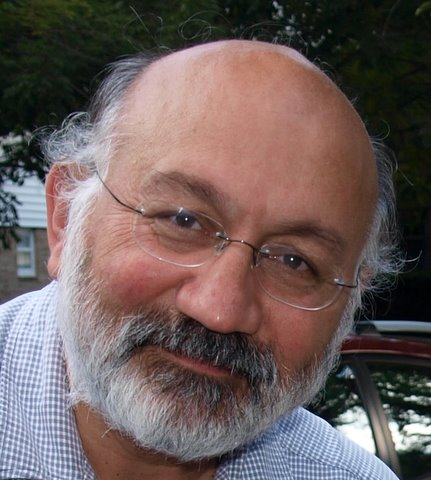
Prof. Predrag Pega Hrnjak
University of Illinois – USA
Abstract: Conventional modeling of condensers always assumes three zones: desuperheating, condensation and subcooling even it is clear that condensation occurs in surheating zone at some conditions and that subcooling occurs during condensation. This paper discusses the actual situation and provides experimental validation of the hypothesis. The experimental results show heat transfer coefficients (HTC) and pressure drop at mass flux 100 to 240 kg m-2s-1 and pressure 5, 6, and 7.5 MPa in a horizontal smooth tube of 6.1 mm inner diameter. Data are compared to correlations proposed for other working fluids or other conditions. Heat rejection process is categorized as occurring in superheated, two-phase, and subcooled zone which bulk mean refrigerant temperature being superheated, saturated, and subcooled respectively. Results show much higher values of HTC than correlation proposed for single-phase turbulent flow in superheated zone. The occurrence of condensation in superheat zone is evident when tube wall temperature is below saturation temperature. The results show that simplified calculations of heat rejection in superheated zone significantly oversize the condenser.
Prof. Hrnjak is with Prof. Jacobi a Co-Director of the Air Conditioning and Refrigeration Center (ACRC) at the University of Illinois at Urbana Champaign and a professor at the UI Department of Mechanical Science and Engineering. ACRC is over 100 people and few million dollars strong, NSF founded University – Industry cooperative research center focused on systems, components, interaction, controls … of modern energy conversion systems with emphasis on refrigeration. Prof. Hrnjak’s 25 students strong research group is the part of the ACRC. Dr. Hrnjak is also a founder and president of a vibrant R&D company CTS (Creative Thermal Solutions) which bridges ACRC activities (university research in function of education) and industry with its typically confidential program conducted by over 40 full time engineers and scientists in a 6000 m2 own laboratory facility.
Prof. Hrnjak advised over 70 graduate students so far. Pega authored or coauthored with his students or coworkers over 200 articles, several books, and numerous presentations. Pega is active member of ASME, ASHRAE, IIR, SAE, IIAR, editor or member of the boards of few professional journals. Before joining UI in 1993 Pega started his professional journey ay the University of Belgrade and after obtaining industrial experience got academic positions through Assoc. Prof. at the same school. He also worked at DTU, Denmark, UMR, Missouri, and participated in research of many other universities.
Fluid Dynamics Around Twin Cylinders and Interactions

Dr Mahbub Alam
Department of Mechanical and Aeronautical Engineering, University of Pretoria, Pretoria 0002, South Africa
Abstract: Multiple cylindrical structures are widely seen in engineering, e.g., chimney stacks, tube bundles in heat exchangers, overhead power-line bundles, bridge piers, cables of cable-stayed bridges, masts, chemical reaction towers, offshore structures, pipe lines under the sea, and skyscrapers in modern cities. Flow interference between the structures leads to a very high fluctuating forces, structural vibrations, acoustic noise, or resonance, which in some cases can trigger failure. Recently circular pins in various arrays have been using as fins to enhance the cooling effect. While the enhancement is directly connected to flow around the pins, no much is known of physics of flow around the pins. The knowledge of flow around two cylinders is insightful for understanding the flow around an array of cylinders/pins. This lecture will encompass the advancement of knowledge in physics of flow around two circular cylinders in a cross flow, including steady and fluctuating fluid forces, surface pressure, Strouhal numbers, flow structures, wake characteristics, flow switching mechanisms, possible interaction mechanisms and instabilities.
Based on forces, Strouhal numbers and flow structures, 19 distinct flow categories in the ranges of stagger angle α = 0o ~ 180o and gap-spacing ratio T/D = 0.1 ~ 5 are observed, including one quadristable flow, three kinds of tristable flows and four kinds of bistable flows. The quadristable, tristable and bistable flows ensue from instabilities of the gap flow, shear layers, vortices, separation bubbles and wakes, engendering a strong jump/drop in forces and Strouhal numbers of the cylinders. The two cylinders interact with each other in six different mechanisms, namely interaction between boundary layer and cylinder, shear layer/wake and cylinder, shear layer and shear layer, vortex and cylinder, vortex and shear layer, and vortex and vortex. While the interaction between vortex and cylinder results in a very high fluctuating drag, that between vortex and shear layer results in a high fluctuating lift. On the other hand, the interaction between shear layer/wake and cylinder suppresses mean and fluctuating forces and weakens flow unsteadiness.
Dr Alam Md. Mahbub is a Senior lecturer in the Mechanical and Aeronautical Engineering Department of University of Pretoria, South Africa. Born in Bangladesh, he received M.S. and PhD degrees from Kitami Institute of Technology, Japan, in 2001 and 2004, all in Mechanical Engineering. He worked as a lecturer at Rajshahi University of Engineering and Technology, Bangladesh, before completing his doctorate and as a postdoctoral fellow and research fellow at the Hong Kong Polytechnic University. He has taught courses in Fluid Mechanics, Engineering Mechanics (statics, dynamics, vibrations), Strength of Materials, and Thermodynamics and has authored and co-authored more than sixty technical articles in Fluid Mechanics fields, e.g. Journal of Fluid Mechanics, Physics of Fluids, Journal of Fluids & Structures, Physical Review E, Experiments in Fluids. He is the author of one book (Flow around Twin Cylinders) and two chapters in another two books. His research has mostly involved fluid dynamics around single and multiple cylinders, flow-induced vibrations, fluid-structure interactions, airfoil aerodynamics and flow controls.
Dr Alam was awarded Institute Technical Scholarship for undergraduate study (1991-1995), Japan Government Scholarship (monbusho) for Masters and PhD studies (1998~2004) and JSPS (Japan Society for Promotion of Science) Postdoctoral fellowship for two years. He has also been awarded South Africa National Research Foundation (NRF) rating ‘Promising Young Researcher, Y1’. He has been acting as a reviewer for the top-level journals, e.g. Journal of Fluids and Structures, Experiments in Fluids, Physics of Fluids, Journal of Wind Engineering and Industrial Aerodynamics.
